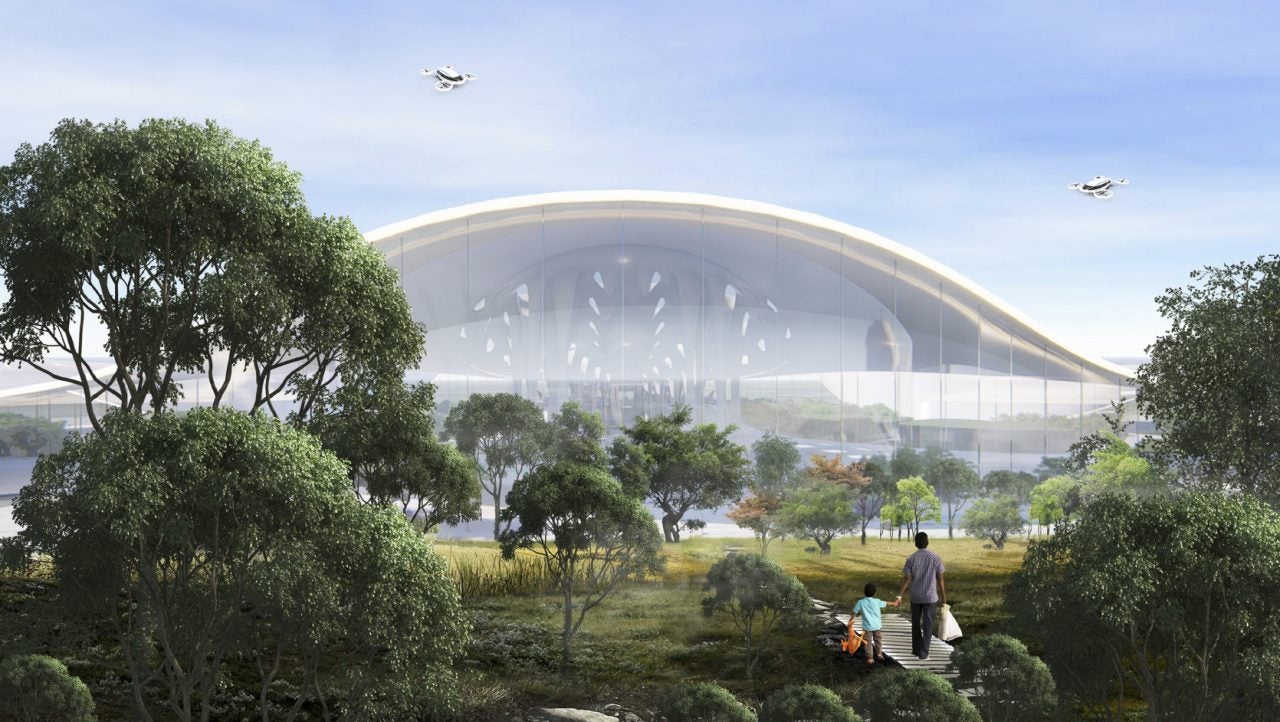
US design firm Fentress Architects has unveiled the winners of its 2020 Fentress Global Challenge, a competition for architecture and engineering students from around the world.
The first place was awarded to Green Gateway, a zero-emission multimodal hub designed by students from the Southern California Institute of Architecture.
The project redesigned New Delhi’s Indira Gandhi International Airport as a sustainability-centric hub with enhanced mobility. The airport features a central terminal surrounded by six towers located around the city.
The towers, working both as air-purifying centres and stations for flying cars, are meant to improve New Delhi’s mobility and would offer an alternative to domestic flights, which are a major source of pollution for India.
The designers described Green Gateway as “zero-emission at the macro and micro level, improving mobility across the city by replacing domestic flight as one of the major sources of pollution and making air travel a personal affair”.
Dušan Sekulic, a student from Slovenia’s University of Ljubljana, came in second with his innovative design for Atlanta’s Hartsfield-Jackson International Airport, which involved autonomous pods, AI-powered navigation as well as vertical take-off and landing for aircraft.
Sekulic’s design transforms Hartsfield-Jackson into a drive-in airport where travellers’ pods and driving chairs bring them to their aircraft.
Fentress awarded students from Beijing Jiaotong University the third place. Entitled Floating Zero City, the plan reimagined Hong Kong’s airport and turned it into a building floating at sea. The new airport would be made of a three-dimensional moveable platform, which would reduce the impact on the terrain while increasing the amount of available land.
The concept’s vertical structure also reduces the time for passengers to move from the check-in to the boarding area.
The Vertebrae – a design by University of Malaya students – and O’Pon the Hill – a project by Jakarta University of Technology – came in first and second in the Peoples’ Choice Awards, with 6,200 and 5,900 votes respectively.
Started in 2011, this year’s edition of the Fentress Global Challenge year asked participants to envision airport mobility for the year 2100.
“A deep passion for design and a creative mindset are the cornerstone of any successful design competition submission,” said Fentress Architects principal in charge of design Curtis Fentress.
“Each year, the submissions we receive are more innovative, spirited and dynamic than the prior year, which shows an exciting outlook for the future of terminal design. We’re greatly impressed by this year’s winners and every submission we received.”



